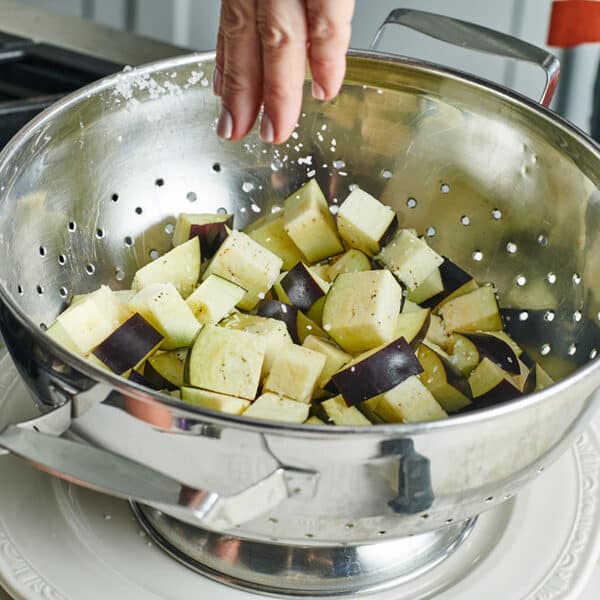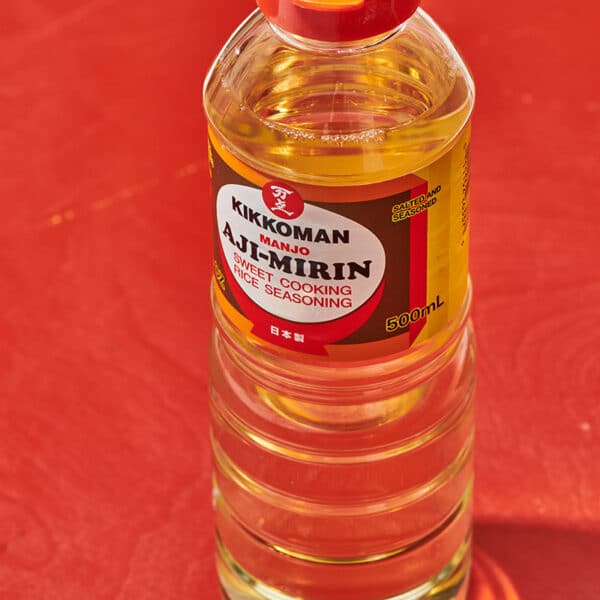How to Cook With Yuzu
on Jun 19, 2024
This post may contain affiliate links. Please read our disclosure policy.
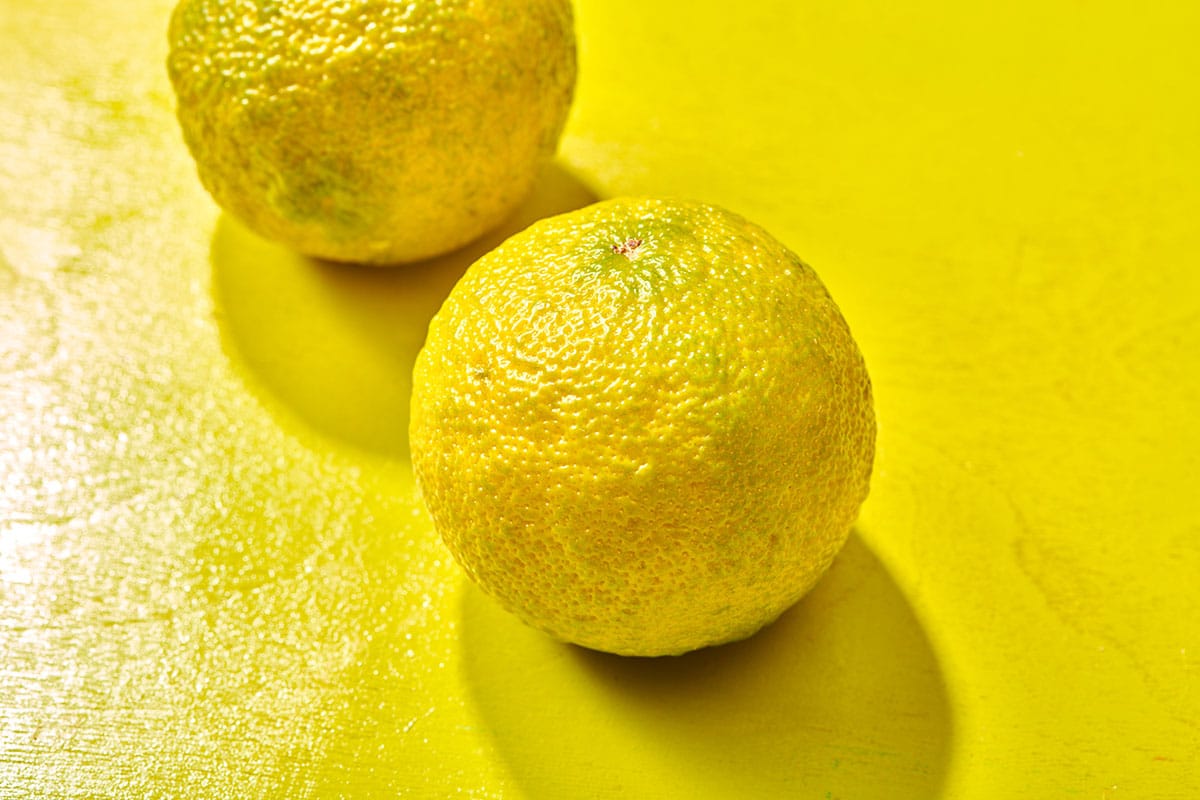
If you like cooking with citrus, then you absolutely need to dig into the world of yuzu. Yuzu is a wonderful Asian citrus fruit that I love to use whenever I can lay my hands on it, and you can also find its juice bottled in certain markets. It’s become a very popular flavor in the U.S. and other Western parts of the world as well.
Yuzu can be used much like a lemon: Squeeze its juice into a drink like these Pitcher Pomelo Palomas or make this refreshing and beautiful yuzu cocktail. If you can get your hands on a whole fresh yuzu, also try using its zest instead of lemon or lime in a recipe. Its tart flavors go great with fattier meat, like Oven-Pulled Pork, Pernil, or Mongolian Beef.
By signing up, you agree to our Privacy Policy.
What's In This Post?
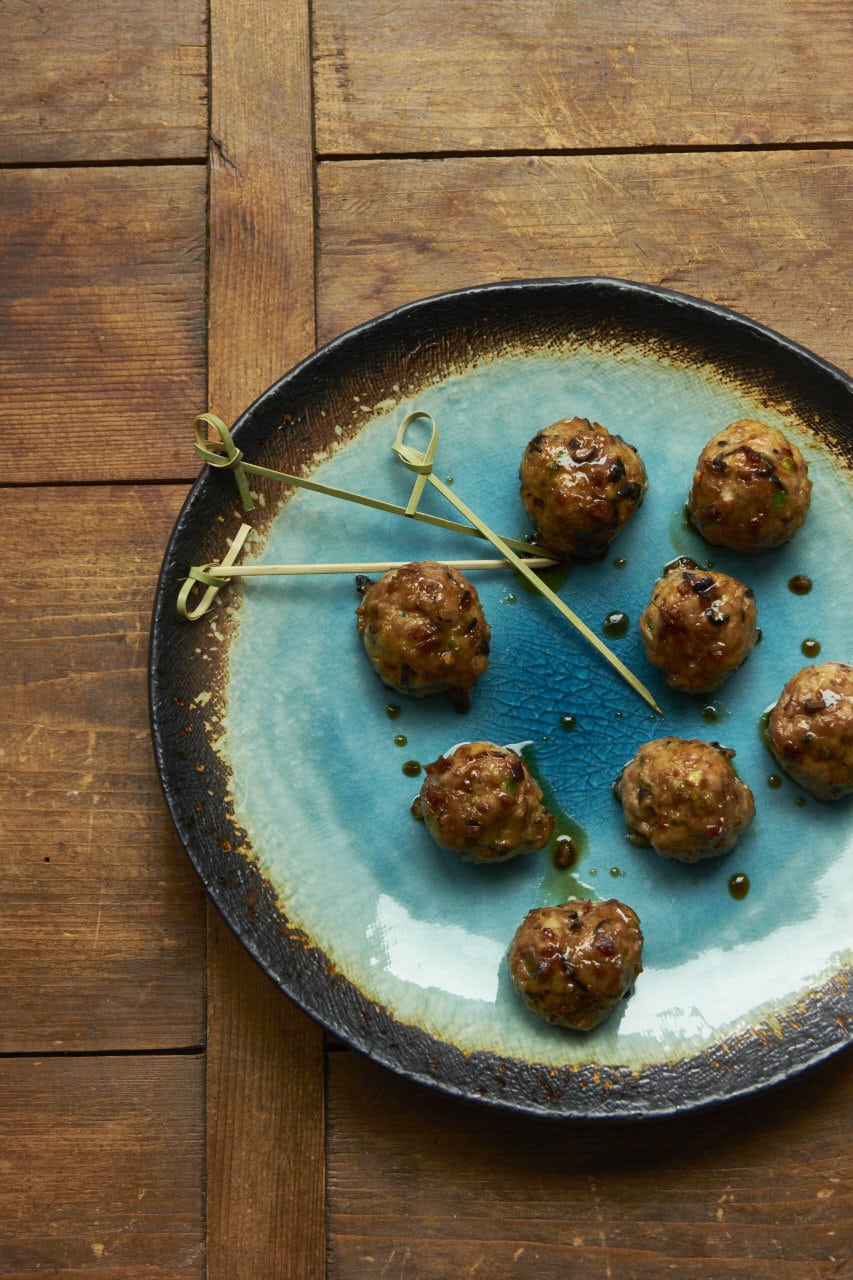
What Is Yuzu?
Yuzu is a yellow citrus fruit native to East Asia. It grows naturally in China and Tibet but has been cultivated in Japan, Korea, and Australia as well and has become a signature ingredient and flavor in many Japanese dishes.
The smell of this strange little fruit is often described as “intoxicating,” and for good reason. It’s something like a mix between the aroma of oranges, lemons, and grapefruits, with some hint of spiciness coming through, as well.
What Does Yuzu Look Like?
A ripe yuzu fruit is yellow and around the size of a clementine. Its skin is lumpy. All yuzu fruits have an indent that looks slightly like a belly button on the bottom of their rind.
Inside the rind, the flesh is a paler yellow and dappled with seeds. There are many more seeds than you’d expect compared to lemons, oranges, and limes, and the seeds can be very large. Because of all those big seeds and the small size of the yuzu, each fruit doesn’t produce much juice; however, the flavors in that precious bit of juice are very potent.
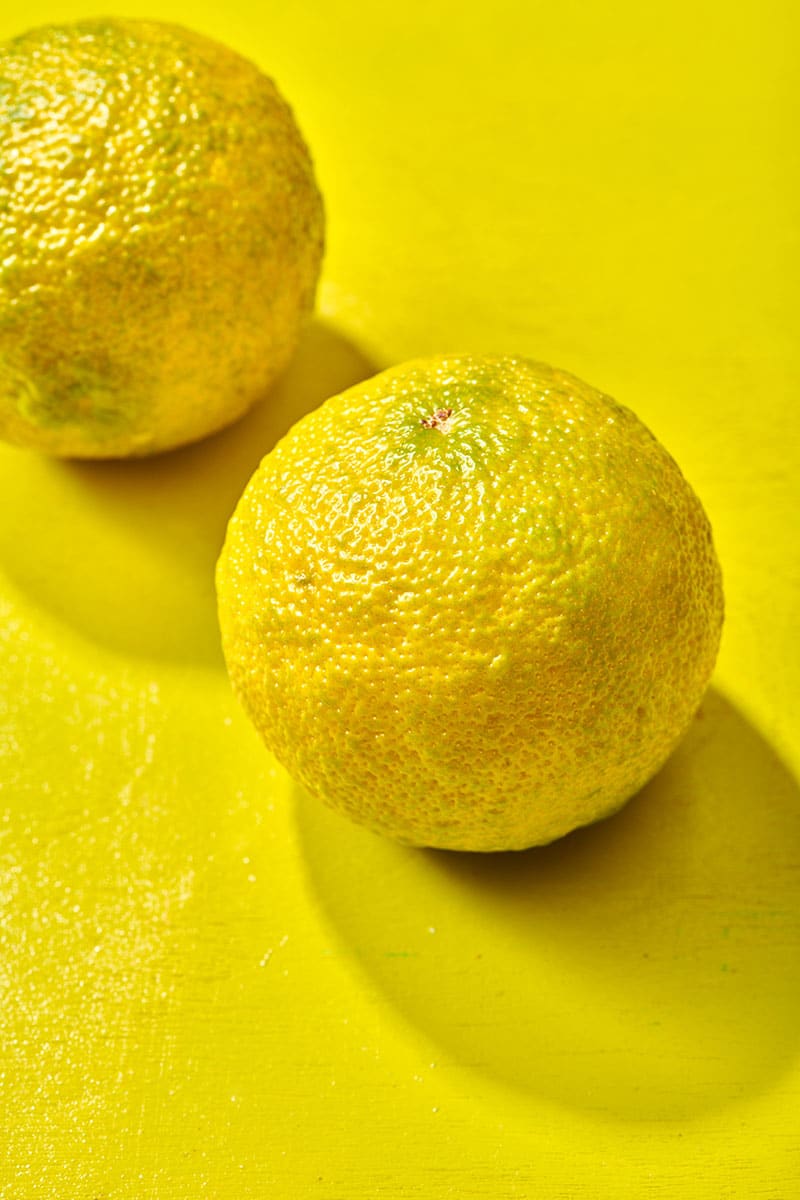
What Does Yuzu Taste Like?
The taste of yuzu is most similar to a grapefruit: It is acidic and citrusy. Apparently, this fruit was discovered just over a thousand years ago in China. It evolved as a cross between the mandarin orange and another citrus fruit — and you can still taste the influence of that orange! When it is not yet ripe, the flavor of the yuzu is more bitter and intense.
Yuzu’s taste is very powerful, but it owes a lot of its reputation to the seductive smell, as well. It’s not just the fruits themselves that carry a strong aroma; in fact, the whole yuzu tree is very aromatic. Yuzu trees are popular garden plants in Japan for the way they can make the whole garden smell. That’s a bucket list thought — to hang out in a garden with yuzu trees in Japan for an afternoon.
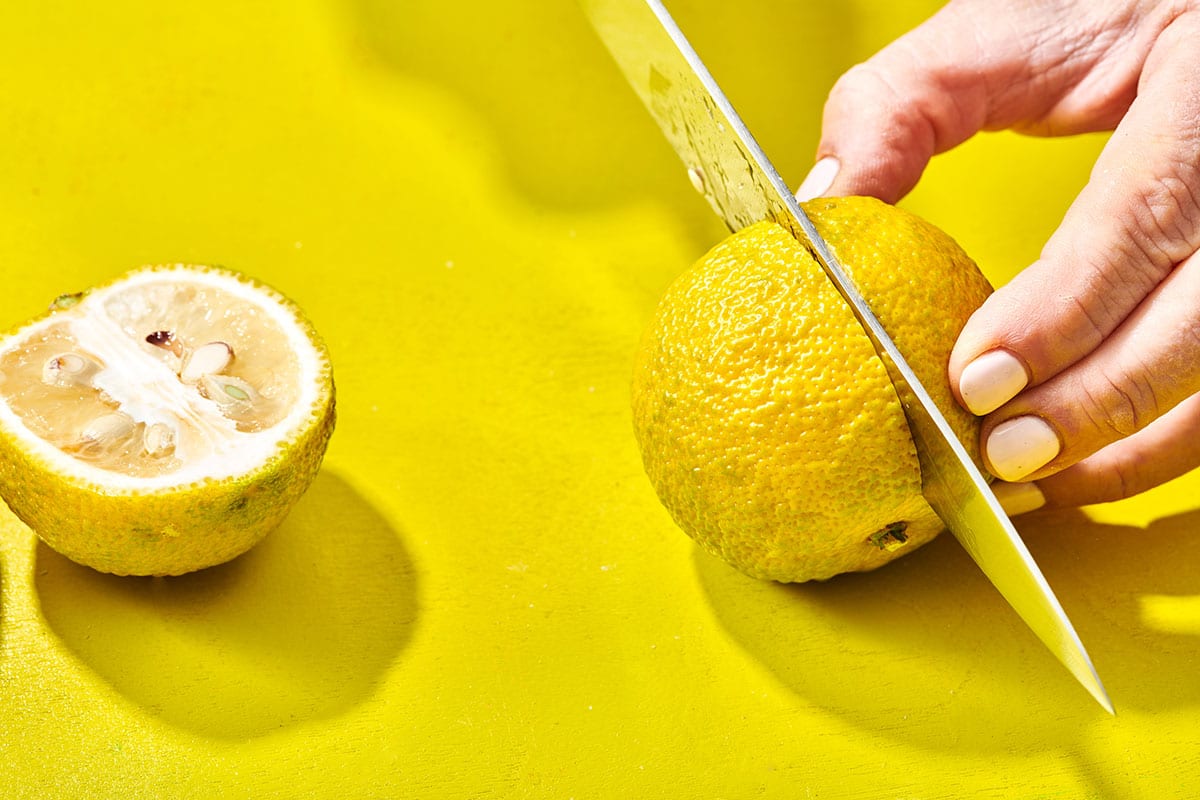
Where to Find Yuzu
American-grown yuzu is increasingly available. However, they are expensive and usually only available during their narrow seasonal window. Your best bet for getting your hands on some yuzu fruit is going to a supermarket that stocks niche foods and local farm products during the winter. Asian markets should also carry it in-season as well. Or, you can order it (in-season) from Melissa’s Produce.
Yuzu juice, on the other hand, can be imported and is much more readily available. All you need to do to snag some yuzu juice is stop by your local Japanese or Korean market or buy yuzu juice online. You can also buy yuzu paste, which is often spiked with some hot peppers and usually used in savory recipes.

How To Prepare and Cook With Yuzu
Yuzu is rarely treated as a typical fruit: Much like a lemon, it is too bitter to eat plain. Instead, yuzu is most often used for its juice and the zest of its rind.
Yuzu juice is an ingredient in many Japanese sauces, such as ponzu sauce, which is most often used as a dip with sashimi or Japanese hot pot. I’ve used ponzu sauce in stir fries and in dishes ranging from Asian-inspired meatballs to burgers. You can use yuzu juice in drinks, too. Make some tea with yuzu and honey to ease a sore throat, or add yuzu to a cocktail for an orange-y infusion of flavor.
How to Cook with Yuzu: Everything you need to know about finding, storing, preparing, and using yuzu, that wonderful, very seasonal Asian citrus fruit.

Yuzu zest is used to make yuzu kosho, a condiment that combines the sourness of the yuzu with green chili peppers to create something spicy, salty, and filled with umami. The rind of unripe yuzu fruits is also used in zest form to garnish salads and sashimi in Japan.
How to Store Yuzu
Plan to use your yuzu fruits quickly. They can be kept outside the refrigerator for a few days, and their shelf life is preserved by putting them in the fridge. Still, it’s a good idea to use them sooner rather than later because the longer they stay in the fridge, the more they will lose their distinctive smell. Also, if they start to dry out, you’ll lose even more of the limited, prized juice.
FAQs
Yuzu trees actually take around 10 years to mature enough to produce fruit! These trees are hardcore — they survive well in cold climates and only yield fruit for a few months of the year, usually in November and December. It’s a genuinely seasonal treat.
Unfortunately for my American readers, it is actually forbidden to import yuzu from other countries into the United States. This policy exists to protect homegrown citrus. Citrus diseases are easily transmissible, so shipping citrus fruits abroad and exposing them to new environments risks damaging our homegrown food sources.
Fun Facts About Yuzu
Did you know that there are yuzu-flavored Doritos? (Sadly, I couldn’t find them in the U.S.) Here are some other fun facts to boost your yuzu knowledge:
- On the winter solstice, it is a Japanese tradition to bathe in hot water with yuzu fruits floating in it. The fruits emit a strong, soothing smell, and it is said that this practice can ward off sickness and treat chapped skin.
- Yuzu seeds were traditionally used to treat skin irritation. Even now, they are still often used to create cosmetic beauty products.
- In Japan, the flavor of yuzu is very popular and is used as the base for snacks from yuzu candy to ice cream to potato chips.
Also see How to Cook with Lemons, How to Cook with Limes, How to Use Finger Limes, and How to Cook with Citrus.



